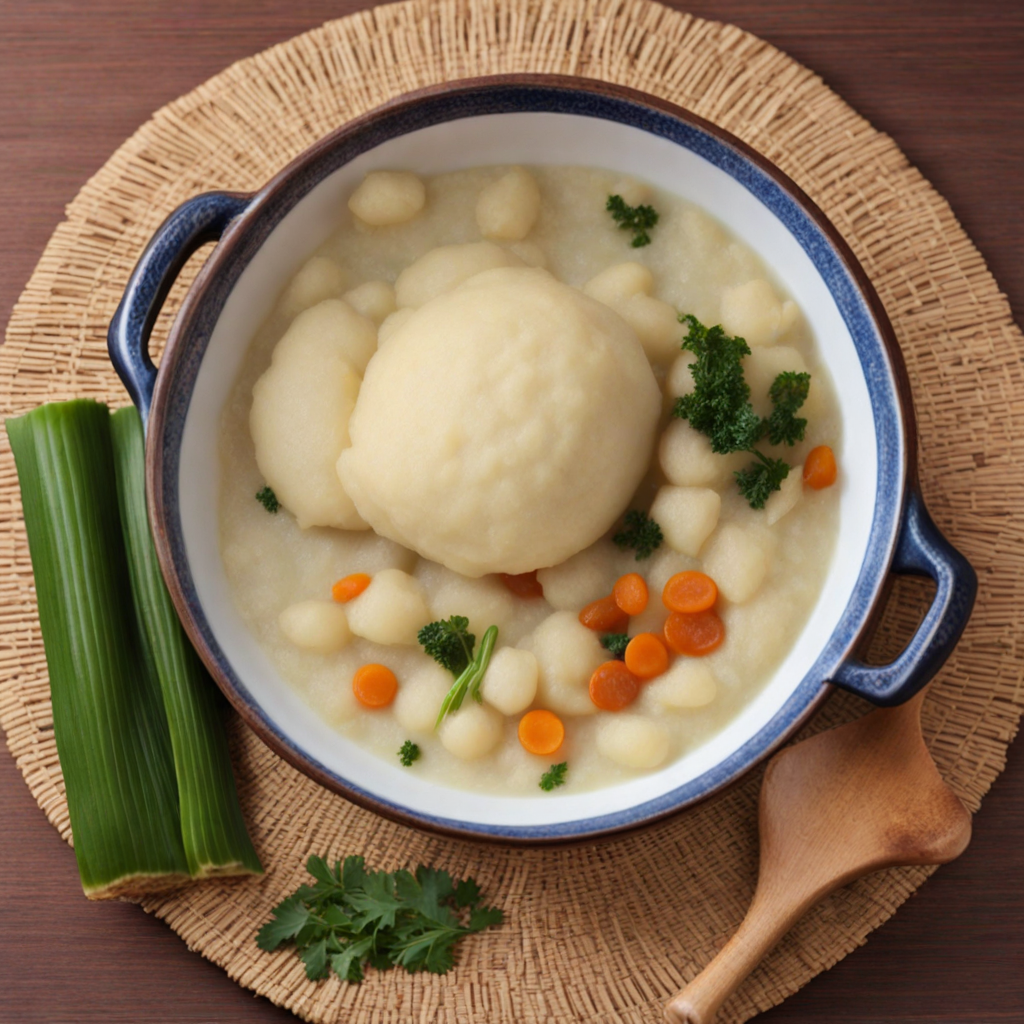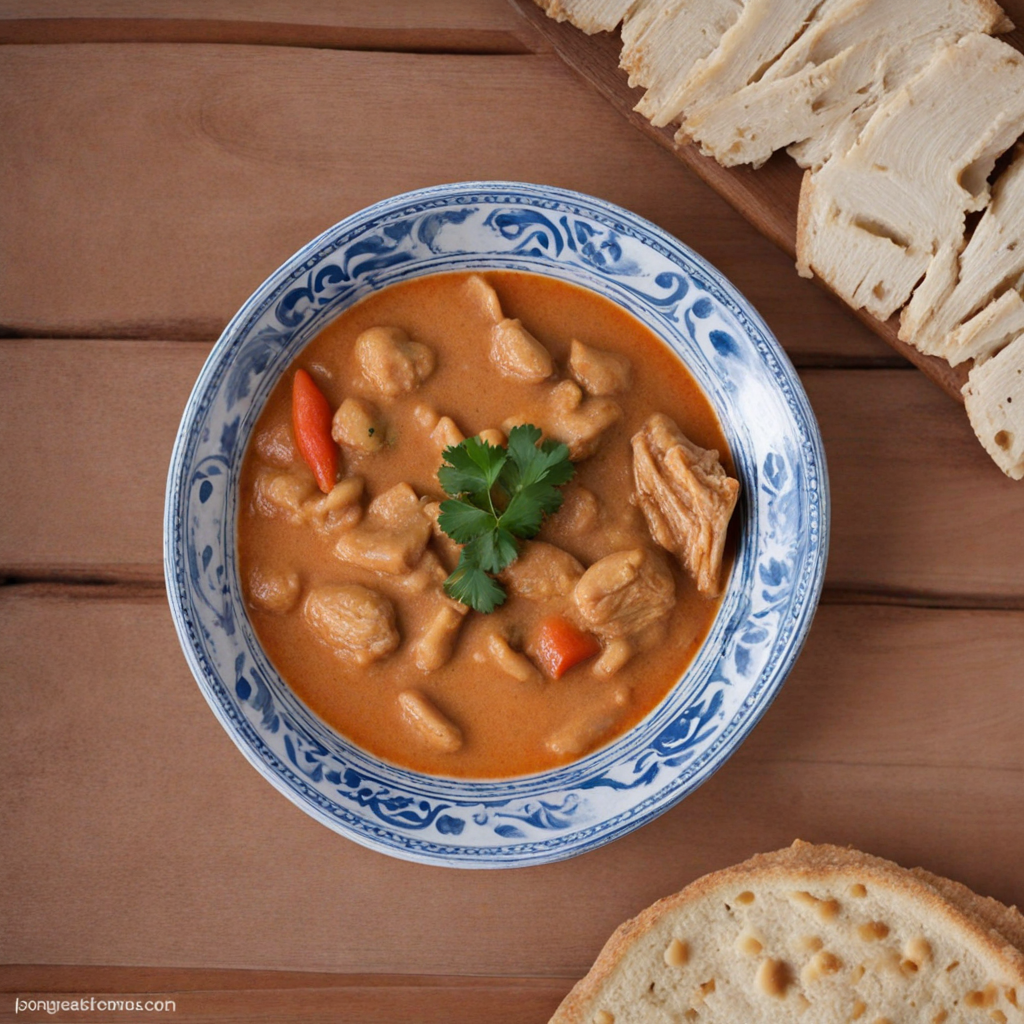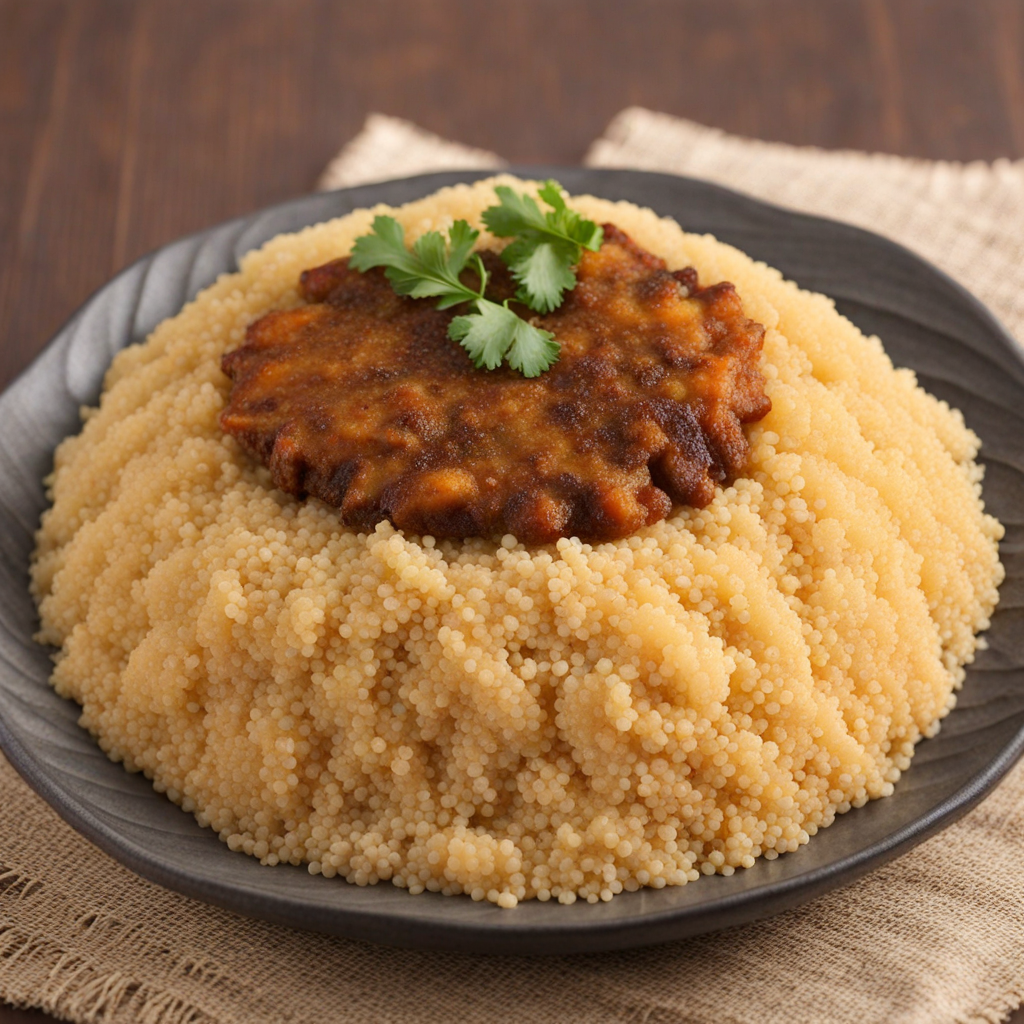Fufu
Fufu is a staple food in many West African countries, including Mali, where it holds both culinary and cultural significance. It is a starchy side dish that serves as an accompaniment to a variety of soups, stews, and sauces. The dish has deep historical roots, dating back centuries, and reflects the agricultural practices and dietary customs of the region. Traditionally, fufu has been made from various starchy ingredients, such as cassava, yams, or plantains, depending on the region and availability of resources. The preparation of fufu is a labor-intensive process that involves boiling the starchy base until it becomes soft and pliable. Once cooked, it is pounded vigorously using a mortar and pestle until it achieves a smooth, elastic consistency. This technique not only enhances the texture but also allows for the flavors of accompanying dishes to meld seamlessly with the fufu. While modern conveniences have introduced variations in preparation methods—such as using blenders or food processors—the traditional method remains a cherished practice in many households, symbolizing communal effort and culinary heritage. The flavor profile of fufu is relatively neutral, which makes it a versatile accompaniment to a variety of dishes. It absorbs the flavors of the soups and stews it is served with, enhancing the overall dining experience. Fufu's soft and stretchy texture provides a satisfying mouthfeel, allowing it to be easily molded and scooped up with hands or utensils. In Mali, fufu is often served alongside rich and savory dishes like peanut
How It Became This Dish
Fufu: A Culinary Journey from Mali Fufu, a staple food in many West African countries, including Mali, is more than just a dish; it is a cultural emblem that reflects the region's rich history, agricultural practices, and social traditions. The origins of fufu can be traced back centuries, with its roots deeply embedded in the daily lives of the people of West Africa. This versatile food has undergone an evolution that speaks to the resilience and adaptability of the communities that cherish it. #### Origins of Fufu The exact origins of fufu are somewhat nebulous, but it is widely believed to have emerged from the early agricultural societies of West Africa. The word "fufu" is derived from the Akan language of Ghana, where it refers to a starchy food made from boiled and pounded cassava, yams, or plantains. In Mali and other parts of West Africa, the dish has adapted to local ingredients and practices, leading to a variety of interpretations. Archaeological evidence suggests that the domestication of crops such as yams, cassava, and plantains occurred thousands of years ago in the region. These starchy tubers became central to the diets of West African communities. The process of cooking and pounding these ingredients into a smooth, elastic dough-like texture is believed to have been developed as a way to make them more palatable, easier to digest, and suitable for communal eating. #### Cultural Significance Fufu holds immense cultural significance in Mali and across West Africa. It is more than just food; it is a symbol of community and togetherness. Traditionally, fufu is served in a communal bowl, encouraging shared meals and fostering social bonds among family and friends. The act of eating fufu is often accompanied by specific rituals, emphasizing respect and gratitude for the food and the labor that went into preparing it. In Mali, fufu is often enjoyed with a variety of soups and stews, such as groundnut soup or okra soup, which are rich in flavors and nutrients. The soft, pliable texture of fufu makes it ideal for scooping up these dishes, creating a harmonious dining experience. Additionally, fufu is often served during special occasions and ceremonies, such as weddings or naming ceremonies, underscoring its role in social celebrations. Fufu is also associated with the concept of "food sovereignty," a movement that emphasizes the importance of local food systems and the preservation of traditional culinary practices. In Mali, where agriculture is a cornerstone of the economy, the cultivation of the crops used to make fufu—such as rice, cassava, and yams—reflects the deep connection between the land and its people. This relationship is celebrated through the preparation of fufu, as it embodies the labor and love of farmers who cultivate these essential ingredients. #### Development Over Time The development of fufu in Mali has been influenced by various social, economic, and historical factors. The introduction of new crops and cooking methods through trade and colonization has led to variations in how fufu is prepared and consumed. During the trans-Saharan trade, Mali was a critical hub, facilitating the exchange of goods, ideas, and culinary practices. The arrival of new ingredients, including rice from Asia, expanded the repertoire of starchy foods available for making fufu. This adaptability has allowed fufu to evolve over time, with different regions in Mali favoring specific ingredients based on local availability. In modern times, globalization and urbanization have further transformed the way fufu is perceived and consumed. While traditional methods of preparation—such as hand-pounding cooked tubers with a mortar and pestle—remain popular, convenience has led to the emergence of pre-packaged fufu products. Instant fufu mixes made from dehydrated ingredients are now available in supermarkets, catering to a younger generation seeking quick and easy meal solutions. While this modernization has raised concerns about the loss of traditional cooking methods, it also reflects the dynamic nature of culinary culture. Moreover, Mali’s political and economic challenges, particularly in recent years, have influenced food security and access to traditional ingredients. As communities face disruptions in agriculture due to conflict or climate change, the resilience of fufu as a staple food remains evident. It continues to adapt, with families finding innovative ways to create fufu using whatever ingredients are available, ensuring that this beloved dish remains a part of their culinary heritage. #### Fufu in Contemporary Mali In contemporary Mali, fufu is more than just a meal; it is an emblem of identity and heritage. It is featured prominently in culinary festivals and cultural events, where chefs showcase their skills in preparing traditional dishes. The resurgence of interest in local cuisine has led to a greater appreciation for fufu, encouraging younger generations to learn traditional cooking techniques from their elders. Additionally, fufu has gained recognition on the international stage. As global interest in African cuisine grows, chefs around the world are incorporating fufu into their menus, introducing it to new audiences and celebrating its unique flavors and textures. This exposure not only highlights the versatility of fufu but also fosters a greater understanding of West African culinary traditions. #### Conclusion Fufu is a testament to the rich culinary heritage of Mali and West Africa. Its origins, cultural significance, and development over time tell a story of resilience, adaptation, and community. As it continues to evolve in the face of modern challenges, fufu remains a symbol of identity and belonging, bringing people together around a shared love for food. Whether enjoyed in a bustling marketplace or a quiet family gathering, fufu will always hold a cherished place in the hearts and stomachs of those who partake in its delicious, starchy embrace.
You may like
Discover local flavors from Mali







